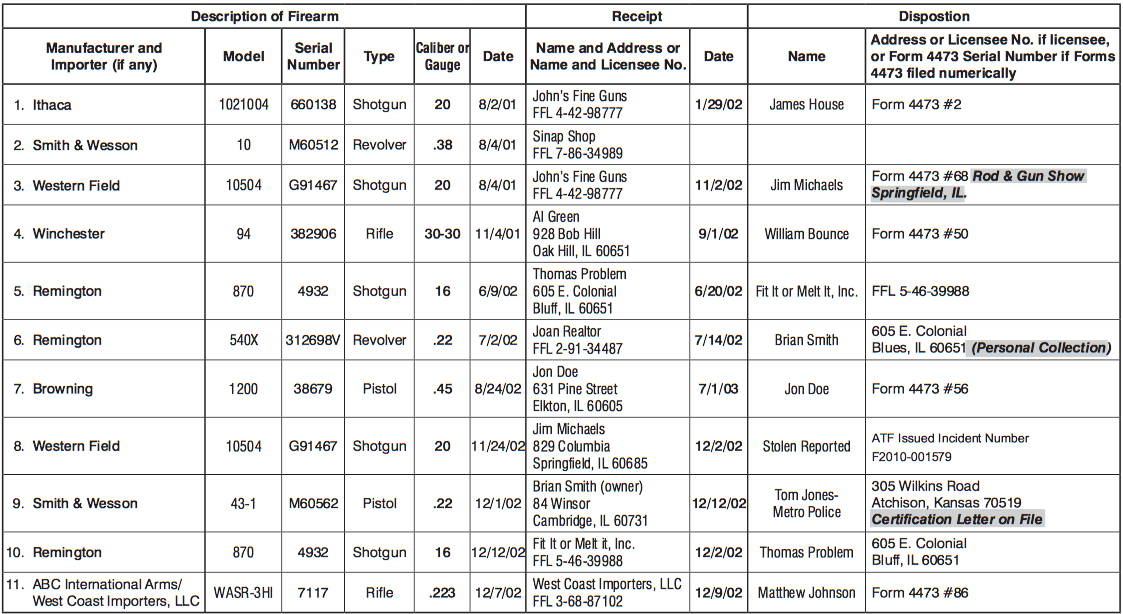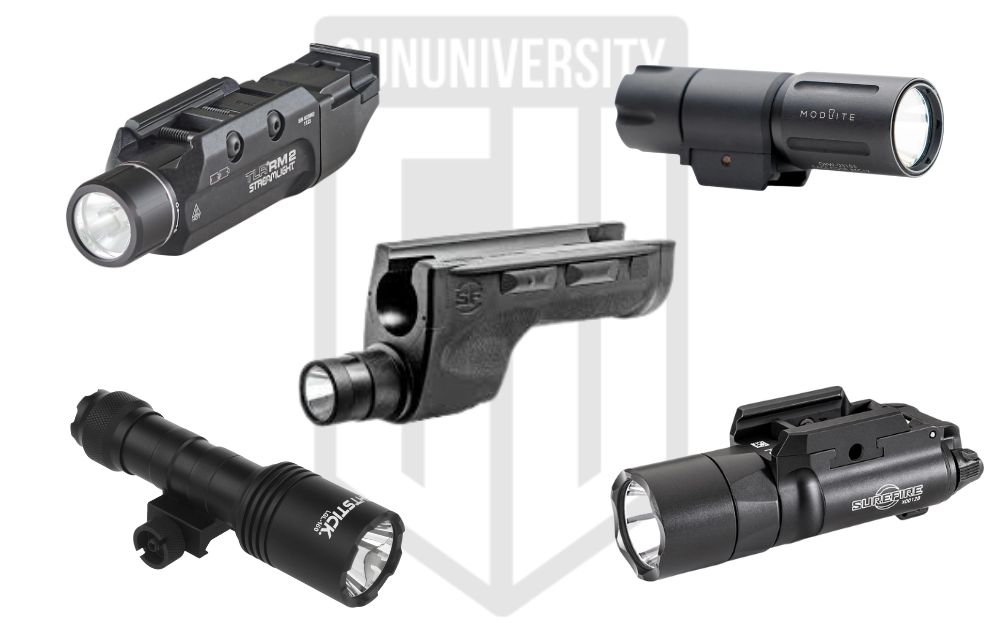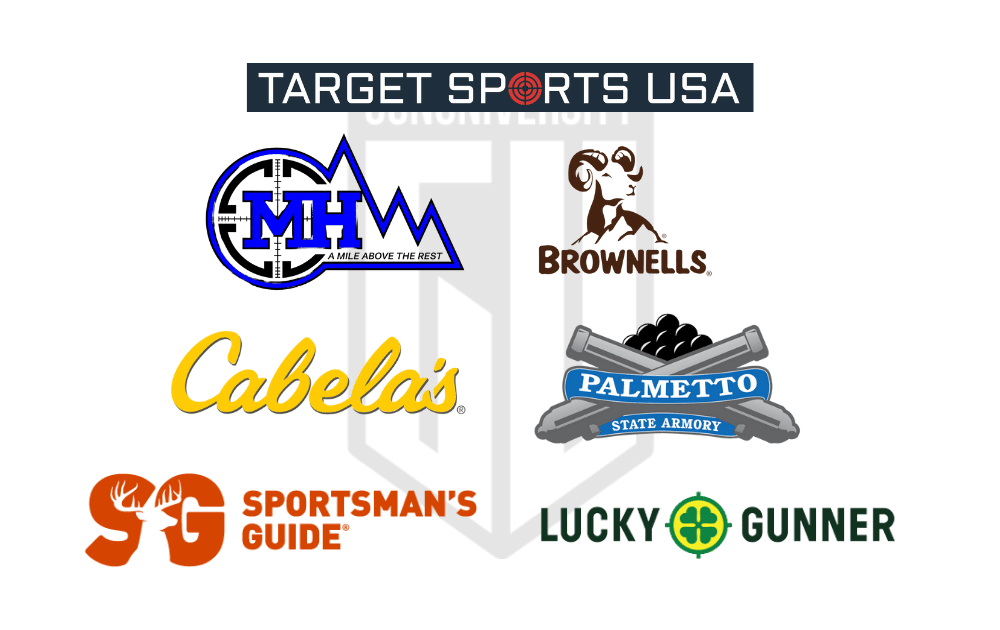Free FFL Bound Book Template
Let’s face it, if you’re reading this, you likely already have your FFL License and need to stay compliant with ATF regulations by keeping records.
Now, as an FFL, there are many different types of records from 4473 forms, and more. But the most important of all is your A&D Bound book. This is critical considering that this is the first thing the ATF wants to see when they do their inspection.
So, ensuring that you have a A&D bound book is key. Now, most home-based or small FFLs don’t need an expensive FFL Software, or formal giant book bought off of Amazon. Instead, you just need a template so you can get started.
However, the laws and rules have changed over the years and there are some outdated Bound Book Templates out there that can harm rather than help.
So, to ensure you get started on the right foot, I’m not only going to show you a free updated A&D bound book template you can get started with, I’ll also break down what the bound book is, and how its different parts.
Download a Free FFL Bound Book Template
Okay, before we get into what the bound book is and how to fill out it out, let’s first jump to a free bound book and get you started there. From this, you can then use the program and follow along.
When it comes to a free FFL bound book template, there is no better option than FFL Safe.
This is a free FFL software that not only acts as a FFL Bound Bound, but also does electronic 4473 as well – making running your FFL records easy as possible. Plus, it’s absolutely free.
You’ll find that with FFL Safe, it is:
- User-friendly interface: No more struggling with complex spreadsheets or paper logs.
- Automatic compliance: The app helps you to follow ATF regulations.
- Time-saving: Spend less time on paperwork and more time running your business.
- Secure: Your records are safely stored and backed up.
I highly recommend giving FFL Safe a try. It’s free, and it’ll make your life as an FFL holder much easier. You can sign up for free here.
Understanding the FFL A&D Book
The Acquisition and Disposition Book (often called the “A&D Book” or “Bound Book”) is the heart of any FFL’s records. It’s essentially an inventory and transaction history of every firearm you receive and sell.
The Two Halves of the Bound Book
- Acquisitions: Every firearm received or made by the FFL holder.
- Dispositions: Every firearm sold or transferred by the FFL holder.
Each section must contain specific information required by ATF regulations. The format is strict, and if you’re keeping electronic records, there are additional backup and handling requirements.
Breaking Down the Official FFL Bound Book Template
Each of these sections are broken down into a total of 10 columns:
- Manufacturer, Importer (if any), or “Privately Made Firearm” (PMF)
- Model
- Serial Number
- Type
- Caliber or Gauge
- Date (of Acquisition)
- Name and Address of Non-Licensee; or if licensee, Name and License No.
- Date (of Disposition)
- Name (of recipient)
- Address of Non-Licensee; License No. of Licensee, or 4473 Transaction Number is such forms filed numerically
Columns 1-5 are the description of the firearm.
Columns 6 and 7 are the receipt information.
Columns 8-10 are the disposition information.
The FFL may also have a “Notes” column which is used to show any extra information about the transactions and must include any edits made to the information in the bound book.
All of the information in the description of the firearm must come directly from the markings on the firearm – it may not be information from the product packaging nor invoices.
Manufacturer, Importer (if any), or “Privately Made Firearm” (PMF)
The manufacturer section must include the marked name of the manufacturer along with the name of the importer if it is a foreign firearm. In our template example above, the first line shows a pistol made by Glock in Austria but imported by Glock, Inc. the American company.
Model
This section includes the model information as marked on the firearm.
Serial Number
The serial number section contains, you guessed it, the serial number from the firearm.
Type
The “type” section can only include the types of firearm specified by the ATF.
The basic (most common) types include:
- Rifle
- Pistol
- Revolver
- Shotgun
- Frame
- Receiver
But, in cases that involve firearms regulated by the National Firearms Act, they also include:
- Silencer
- Short Barreled Rifle
- Short Barreled Shotgun
- Any Other Weapon (AOW)
- Machine Gun
And, there are some unique cases where types can be other things like “Pistol Grip Firearm” or simply “Firearm.”
Caliber or Gauge
This section includes the caliber or gauge of the firearm as it is marked (usually on the barrel). In cases where a firearm doesn’t have a barrel (frames and receivers), this section can include “none.”
Date (of Acquisition)
This is the date that the firearm was received or made by the FFL.
Name and Address of Non-Licensee; or if licensee, Name and License No.
This column from the bound book template includes the information about where the firearm was received. If it is an individual, the column will contain their name and address. However, if the firearm was received from an FFL, this will include the FFL’s name and license number.
Date (of Disposition)
This is the date that the firearm leaves the FFL’s inventory – whether it is sold to an individual or transferred to another FFL.
Name (of recipient)
This section includes the name of the person or entity to which the firearm was given.
Address of Non-Licensee; License No. of Licensee, or 4473 Transaction Number is such forms filed numerically
This final column of the bound book contains the address of the individual or the license number of the FFL to which the gun was disposed. If an FFL chooses to file their 4473s (the transaction form from the ATF used to sell a firearm) numerically, a custom transaction number can be used here instead of the customer’s address.

Recent Posts
October 31, 2025
October 29, 2025
October 29, 2025
October 25, 2025




![Right to Bear CCW Insurance Review [2025]: Written by a Lawyer](https://gununiversity.com/wp-content/uploads/2022/06/Right-to-Bear-Insurance-Review.png)
